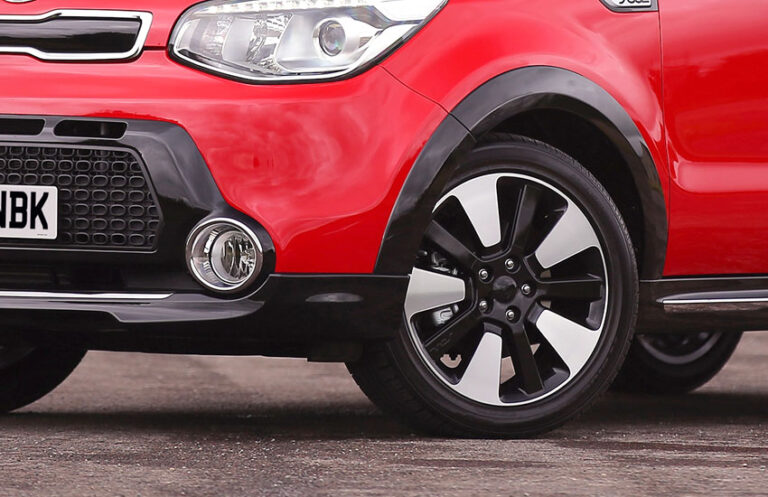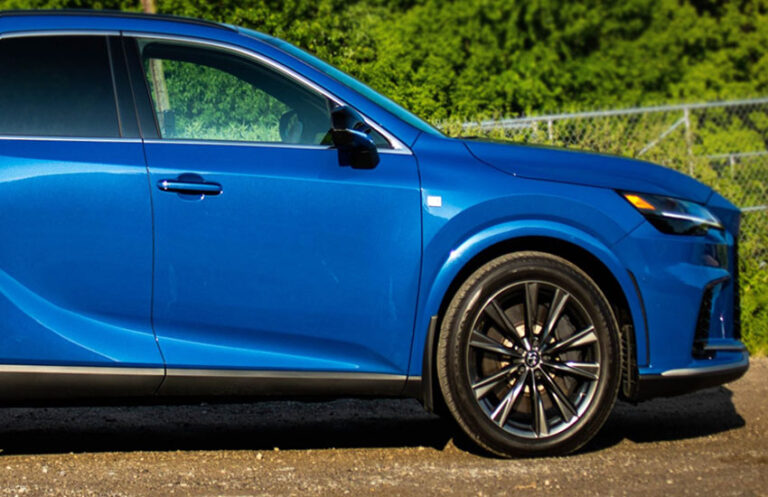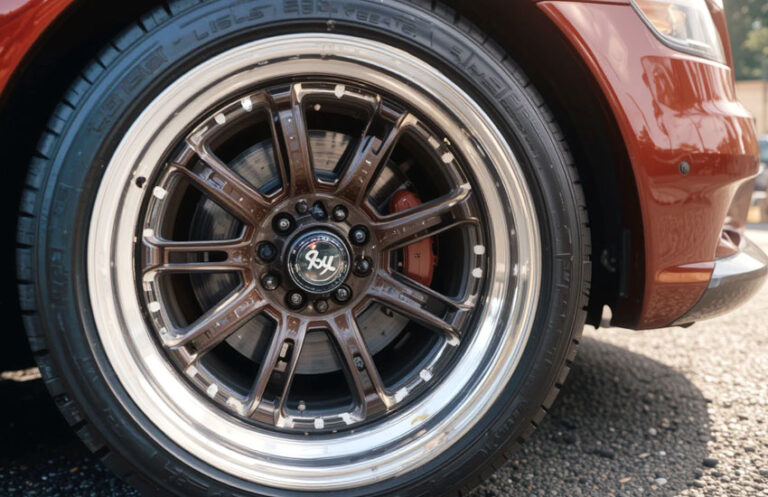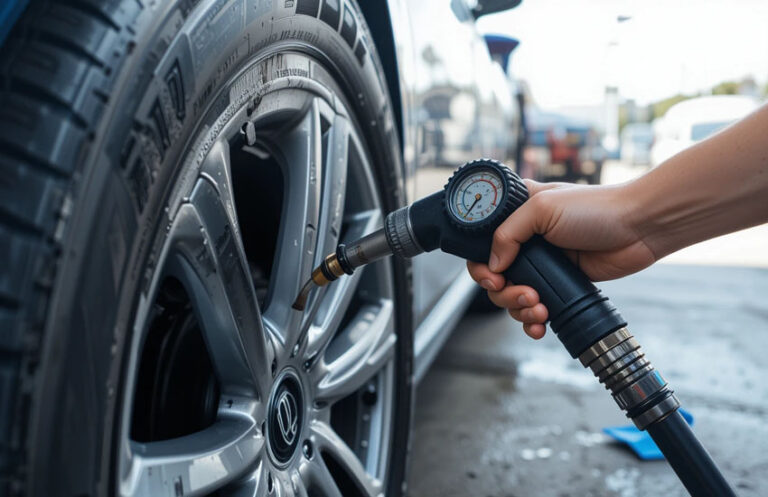As an Amazon Associate, I earn from qualifying purchases at no extra cost to you.
How Can I Fix a Bubble in My Tire? A Simple Guide to Tire Safety
Have you ever looked at your tire and noticed a strange bulge or bubble forming? If so, you're not alone! Tire bubbles can appear out of nowhere, and the idea of driving on one can be nerve-wracking. But don't worry—fixing a bubble in your tire doesn't have to be difficult, and in this article, we'll break down exactly how you can address the issue, whether it requires a quick fix or a replacement. Let's dive in and learn how to handle a tire bubble like a pro!
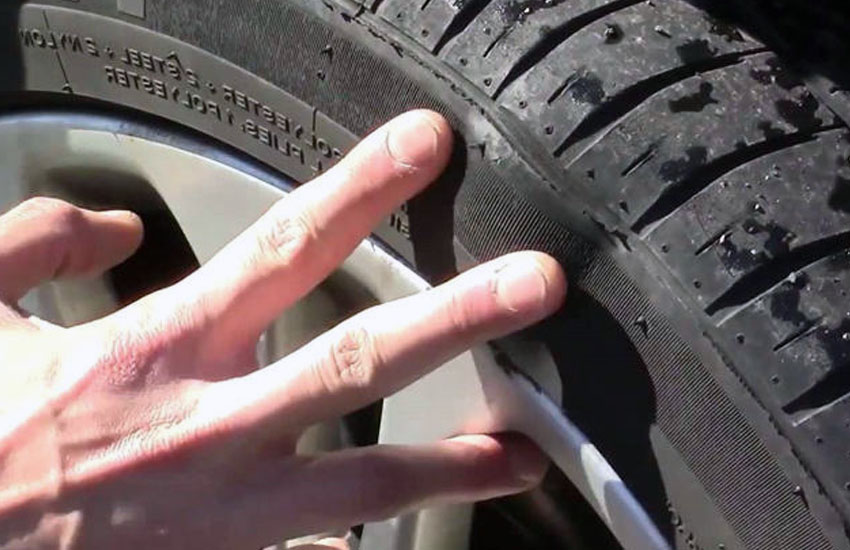
Understanding Tire Bubbles: What Causes Them?
Tire bubbles can seem like a mysterious issue at first, but in reality, they're caused by a few specific factors. It's important to understand these causes because knowing why a bubble forms can help you avoid them in the future and keep you safer on the road.
Common Causes of Tire Bubbles
A tire bubble, also known as a bulge, forms when the internal structure of the tire gets damaged, causing the air inside the tire to push outward. This can happen for a variety of reasons. Let's take a closer look at some of the most common causes:
- Potholes and Road Hazards: Hitting a pothole or other road hazard with your tire can cause internal damage. When the tire impacts a hard surface, the sidewall may get weakened, and air can leak into the area, causing the bubble to form. This is one of the most common causes of tire bubbles, especially in areas where roads are poorly maintained.
- Under-Inflated or Over-Inflated Tires: Both over-inflation and under-inflation put stress on your tires. When your tire is under-inflated, it can cause the sidewalls to flex more than they should, leading to damage over time. On the other hand, over-inflating a tire makes it more rigid, which also makes it more likely to form a bubble after a heavy impact.
- Worn-Out Tires: As tires age, the rubber becomes more brittle and less resilient. Old tires are more susceptible to developing bubbles because their internal structure is compromised. If your tires are nearing the end of their lifespan, it's a good idea to replace them to prevent unexpected issues like bubbles.
- Manufacturing Defects: In rare cases, a tire bubble may be caused by a defect from the factory. A small flaw in the tire's design or materials could cause a weak point where air can escape, creating a bubble. While this is less common, it can happen, especially with cheaper or poorly manufactured tires.
How Bubbles Affect Your Tire and Vehicle
Once a bubble appears, it's important to understand how it can affect the safety of your tire and your vehicle. A tire with a bubble is at risk of blowing out, especially if the bubble grows larger. This can cause you to lose control of your vehicle, leading to a dangerous situation. Furthermore, a bubble can impact the balance of your car, leading to uneven wear and a rougher ride.
Driving on a tire with a bubble can also increase the risk of further damage to the tire. The bubble weakens the sidewall, and if the tire continues to be driven on, it could tear or rupture. For this reason, addressing a tire bubble as soon as you notice it is essential to keep you and your passengers safe.
How to Inspect and Identify a Tire Bubble
So, how do you go about finding a bubble in your tire? The good news is that identifying a tire bubble is relatively easy, and it doesn't require any special tools. You can perform a basic inspection yourself, saving time and money before deciding on your next steps.
Step 1: Visual Inspection
Start by visually inspecting your tire. Look for any signs of bulging, especially on the sidewalls. A bubble will typically appear as a soft, rounded protrusion that disrupts the smooth surface of the tire. This is one of the easiest ways to spot a bubble.
Take note of the size and location of the bubble. If the bubble is small, it may not be immediately noticeable, but it will still need attention. Larger bubbles are more obvious and pose a higher risk to your safety, so it's crucial to check your tires regularly for any abnormal shapes or sizes.
Step 2: Physical Inspection
Once you've done a visual check, it's time for a more thorough physical inspection. To do this, run your hands over the surface of the tire, especially on the sidewalls. If you feel a soft or spongy area, it could be a sign of a bubble. Sometimes, a bubble might not be visible at first, but you can feel the difference when you touch the tire.
Be sure to check both sides of the tire and don't forget to inspect the tread area. Although tire bubbles are most common on the sidewalls, they can sometimes form on the tread, especially if the internal structure of the tire is compromised.
Step 3: Use a Pressure Gauge
If you're unsure whether there is a bubble or if you want to check for under-inflation, you can use a tire pressure gauge. A tire that is under-inflated can put stress on the sidewalls and increase the likelihood of a bubble forming. Ensure that the tire is inflated to the manufacturer's recommended pressure and use the gauge to confirm this. If the tire pressure is too low, it could be contributing to the problem.
In addition, if you notice a significant difference in the pressure between tires, it could be a sign that something is wrong, such as an air leak or internal damage, which could eventually lead to a bubble forming.
Step 4: Assess the Tire's Age and Condition
If you notice a bubble, it's also a good idea to assess the overall age and condition of your tire. Check the tire's production date, which is printed on the sidewall in the form of a four-digit code (e.g., 3518 means the tire was made in the 35th week of 2018). Tires older than six years are more likely to develop bubbles, so if your tire is getting up there in age, it might be time to replace it, even if you don't see any visible damage.
Should You Repair or Replace a Tire with a Bubble?
Once you've identified a tire bubble, the next question is whether you should repair the tire or replace it entirely. This is a critical decision, and the right choice depends on several factors, including the size and location of the bubble, the tire's overall condition, and whether it’s safe to drive on.
When to Replace the Tire
In most cases, a tire with a bubble should be replaced rather than repaired. Here's why:
- Safety Concerns: A tire with a bubble is at a higher risk of rupturing or blowing out. This could lead to a dangerous situation on the road, especially at high speeds or in an emergency. The risk of failure outweighs any potential benefit from trying to repair the tire.
- Structural Damage: The bubble usually indicates internal damage to the tire's sidewall, which cannot be repaired safely. A tire's sidewall is crucial for providing support and keeping the tire's shape, and once it's compromised, the tire is no longer structurally sound. A patch or plug won't fix this problem.
- Cost of Repair vs. Replacement: In some cases, tire repair shops might attempt to repair a sidewall bubble, but it's not a guaranteed fix, and the cost of repair may approach that of buying a new tire. Given the risks involved, it's often cheaper and safer to replace the tire.
When You Might Be Able to Repair the Tire
There are a few cases where a tire with a bubble might be repairable, but these are very rare and typically involve small bubbles or damage in the tread area rather than the sidewall. If the bubble is located in the tread and hasn't caused significant internal damage, a professional tire repair shop may be able to fix it. However, this is not something you should attempt on your own.
Additionally, some tire manufacturers offer warranties that may cover certain types of damage, including bubbles caused by manufacturing defects. If your tire is still under warranty and has a bubble due to a defect, you might be able to get a replacement at no cost to you.
Final Considerations: Replacing the Tire
If your tire is damaged beyond repair, replacing it is the safest and most reliable option. When you replace a tire with a bubble, make sure to replace it with one that matches the specifications of your vehicle. If you're unsure about which tire to choose, consult with a professional at a tire shop to ensure you get the right size and type.
Remember, the sidewall of a tire is a vital part of the tire's structure. Once it's compromised, it's not worth taking the risk to drive on it. Replacing the tire will give you peace of mind and keep you safer on the road.
I hope you now feel confident in dealing with a tire bubble and understand the importance of addressing it right away. Whether you repair or replace your tire, safety should always come first!
Frequently Asked Questions
Is it safe to drive with a tire bubble?
No, it is not safe to drive with a tire bubble. The bubble weakens the tire's structure and increases the risk of a blowout, which can lead to loss of control and accidents.
Can a tire bubble be fixed?
In most cases, a tire with a bubble cannot be repaired safely. The damage to the sidewall is too significant, and it's best to replace the tire.
Do I need to replace all four tires if one has a bubble?
Not necessarily. You only need to replace the tire with the bubble, but it's a good idea to replace them in pairs for better balance and performance.
Is it possible to patch a tire with a bubble?
No, a patch won't fix a tire with a bubble. The sidewall of the tire is damaged, and no patch will restore its structural integrity.
Can tire bubbles form in the tread area?
Yes, while less common, bubbles can form in the tread area, especially if the internal structure of the tire is compromised. However, bubbles are most likely to appear on the sidewalls.
Is it dangerous to drive with a flat tire that has a bubble?
Yes, driving on a flat tire with a bubble is highly dangerous. The bubble indicates that the tire's structure has been weakened, and driving on it could cause the tire to burst.
Do tire bubbles occur in all types of tires?
Tire bubbles can form in any type of tire, but they are more common in older tires, tires that are under-inflated or over-inflated, or tires that have suffered impact from road hazards.
Can I temporarily fix a tire bubble with tire sealant?
Tire sealant is not a solution for a tire with a bubble. It can temporarily seal small punctures, but it will not fix the internal damage caused by a bubble.



